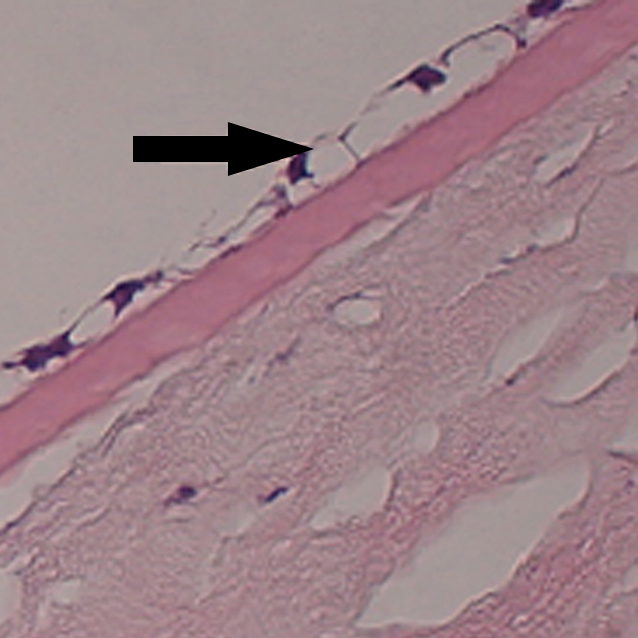Effects of topical travoprost 0.004% on intraocular pressure and corneal biomechanical properties in an animal model
Main Article Content
Abstract
Purpose
To determine whether topical application of travoprost 0.004% induces changes in corneal biomechanical properties affecting intraocular pressure (IOP) values in rabbits.
Methods
Both eyes of 10 New Zealand rabbits were measured 3 times with the Ocular Response Analyzer (ORA) before treatment. Each measurement included corneal hysteresis (CH), corneal resistance factor (CRF), corneal-corrected IOP (IOPcc), and Goldmann equivalent IOP (IOPg). A drop of travoprost 0.004% was applied once daily in right eyes for 3 months; left eyes received no treatments. After 3 months of treatment both eyes of all rabbits were again measured 3 times. After complete keratectomy of both eyes, tissues prepared with hematoxylin-eosin stain were analyzed by means of light microscopy.
Results
The mean pre- and post-treatment IOPg, respectively, for right eyes was 9.92 ± 5.64 mm Hg and 7.62 ± 2.99 mm Hg (P = 0.027); IOPcc, 19.81 ± 5.25 mm Hg and 17.79 ± 4.09 mm Hg (P = 0.063); CRF, 1.65 ± 1.63 mm Hg and 2.18 ± 2.50 mm Hg (P = 0.266); and CH, 2.79 ± 1.74 mm Hg and 2.64 ± 2.08 mm Hg (P = 0.72). Mean post-treatment right and left eye IOPg values were, respectively, 7.62 ± 2.99 and 10.30 ± 4.40 (P = 0.002); IOPcc, 17.79 ± 4.09 mm Hg and 20.37 ± 4.32 mm Hg (P = 0.009); CRF, 1.65 ± 1.63 mm Hg and 2.17 ± 2.47 mm Hg (P = 0.274); and CH, 2.79 ± 1.74 mm Hg and 2.54 ± 2.08 mm Hg (P = 0.575). No difference in CH and CRF was observed between treated and untreated eyes.
Conclusions
Post-treatment reduction of IOP in treated eyes was a direct hypotensive effect of travoprost 0.004% and was not affected by changes in corneal biomechanical properties (CH and CRF), resulting in real lower IOP values.
Downloads
Article Details

This work is licensed under a Creative Commons Attribution-NonCommercial-NoDerivatives 4.0 International License.




